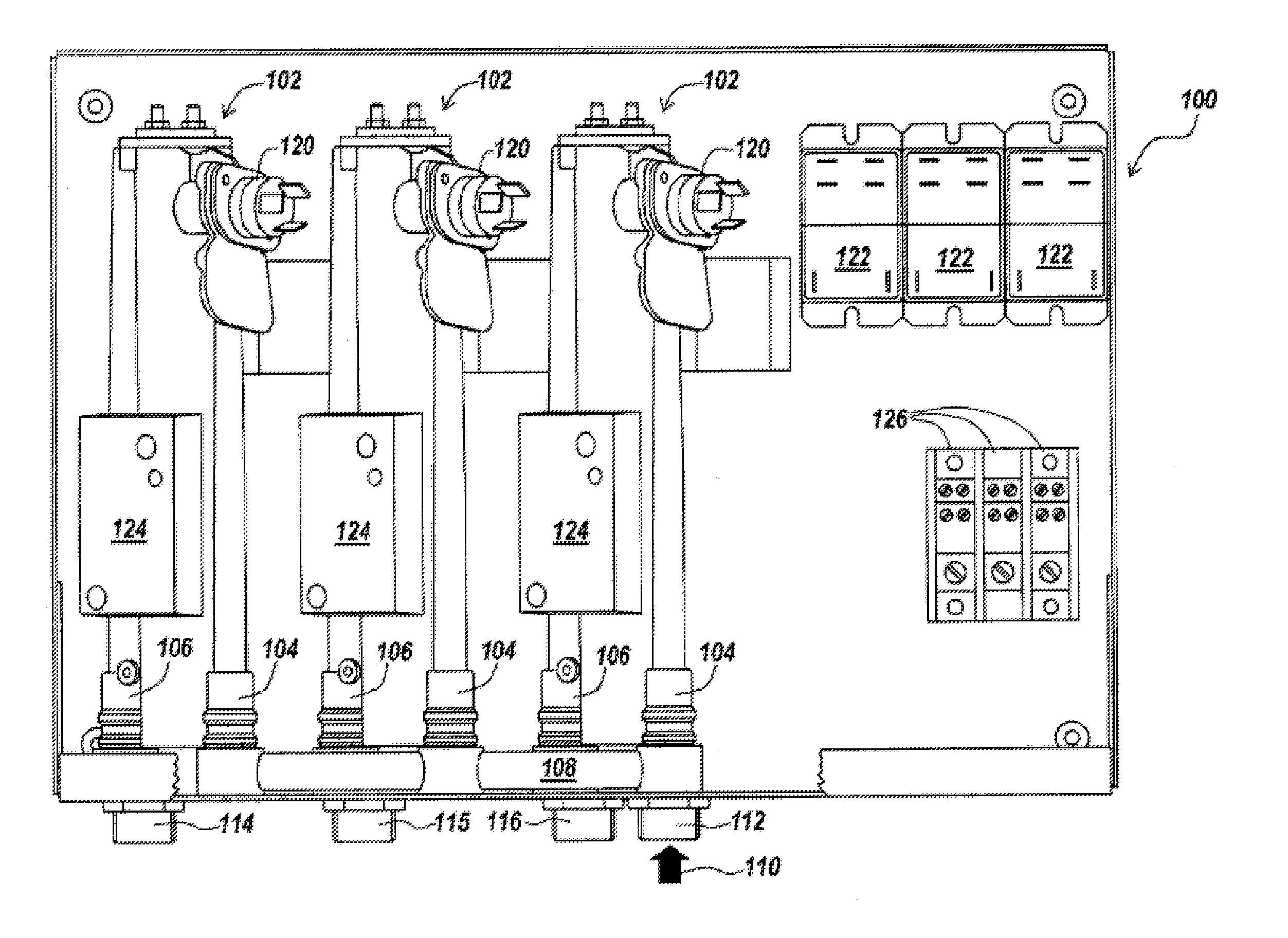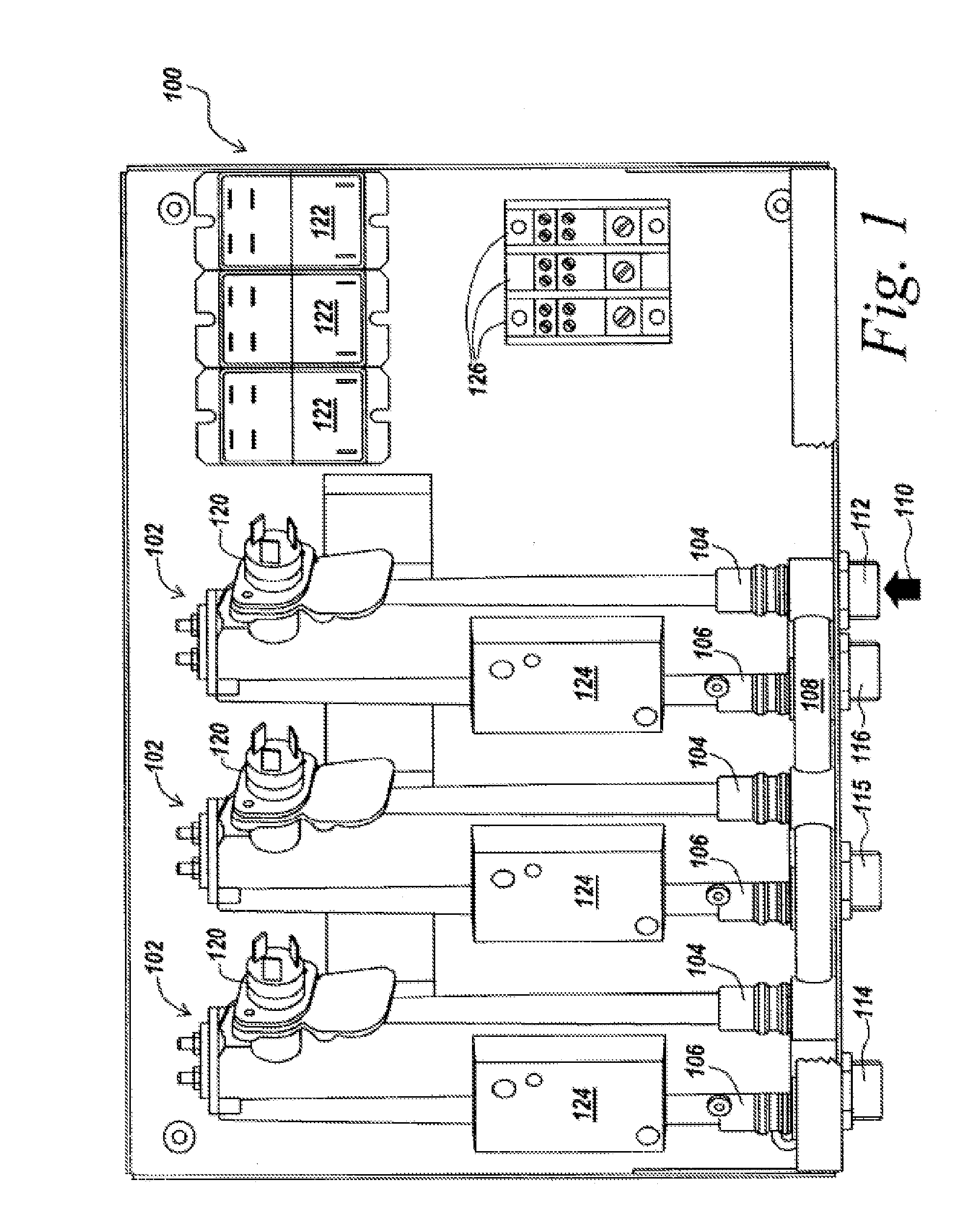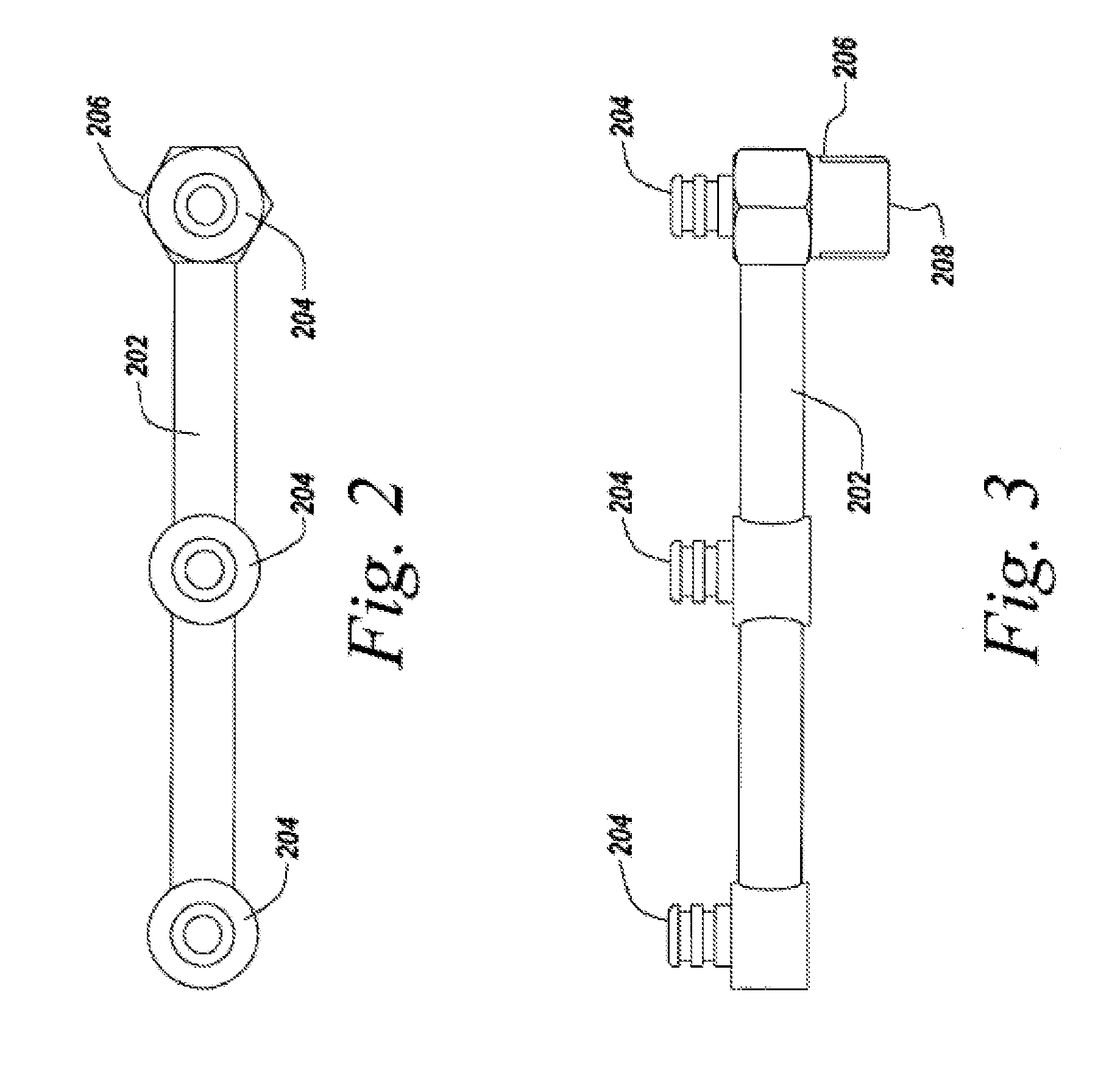Tankless liquid heater using a thermostatic mixing valve
a technology of mixing valve and tankless liquid heater, which is applied in the direction of lighting and heating apparatus, process and machine control, instruments, etc., can solve the problem of inherently energy inefficien
- Summary
- Abstract
- Description
- Claims
- Application Information
AI Technical Summary
Benefits of technology
Problems solved by technology
Method used
Image
Examples
Embodiment Construction
[0015]This disclosure provides, in various aspects, systems for heating a liquid, for example, water. The systems may be configured to deliver, in various embodiments, hot liquids, and in particular hot water of a particular temperature and / or temperature range, at a certain flow rate and / or under various demand characteristics. Accordingly, in various embodiments, the disclosure describes systems for provision of hot water to one or more water fixtures, and in particular, for example, to a one or more fixtures with frequent and rapid changes in hot water demand. Examples of such fixtures and situations include, but are not limited to, multi-station wash basins in high traffic facilities (e.g., industrial washrooms at the end-of-shifts, washrooms in sports stadiums, etc.) and showers facilities (e.g., locker room facilities, dorm facilities, mass decontamination situations, etc.).
[0016]Referring to FIG. 1, in various embodiments, a tankless water heater system 100 comprises one or m...
PUM
 Login to View More
Login to View More Abstract
Description
Claims
Application Information
 Login to View More
Login to View More - R&D
- Intellectual Property
- Life Sciences
- Materials
- Tech Scout
- Unparalleled Data Quality
- Higher Quality Content
- 60% Fewer Hallucinations
Browse by: Latest US Patents, China's latest patents, Technical Efficacy Thesaurus, Application Domain, Technology Topic, Popular Technical Reports.
© 2025 PatSnap. All rights reserved.Legal|Privacy policy|Modern Slavery Act Transparency Statement|Sitemap|About US| Contact US: help@patsnap.com



